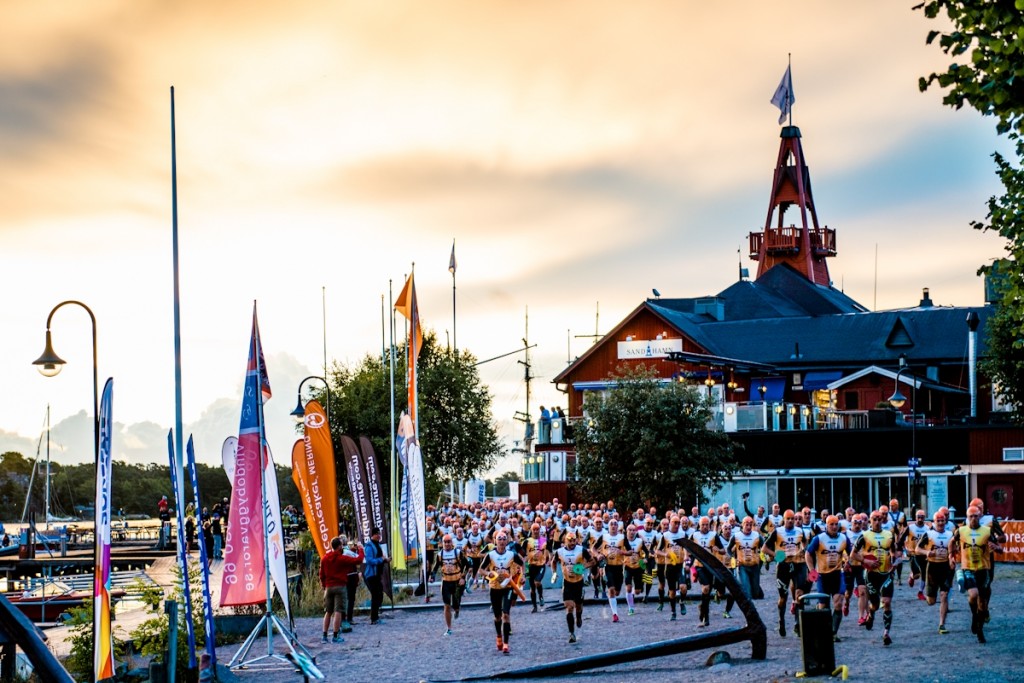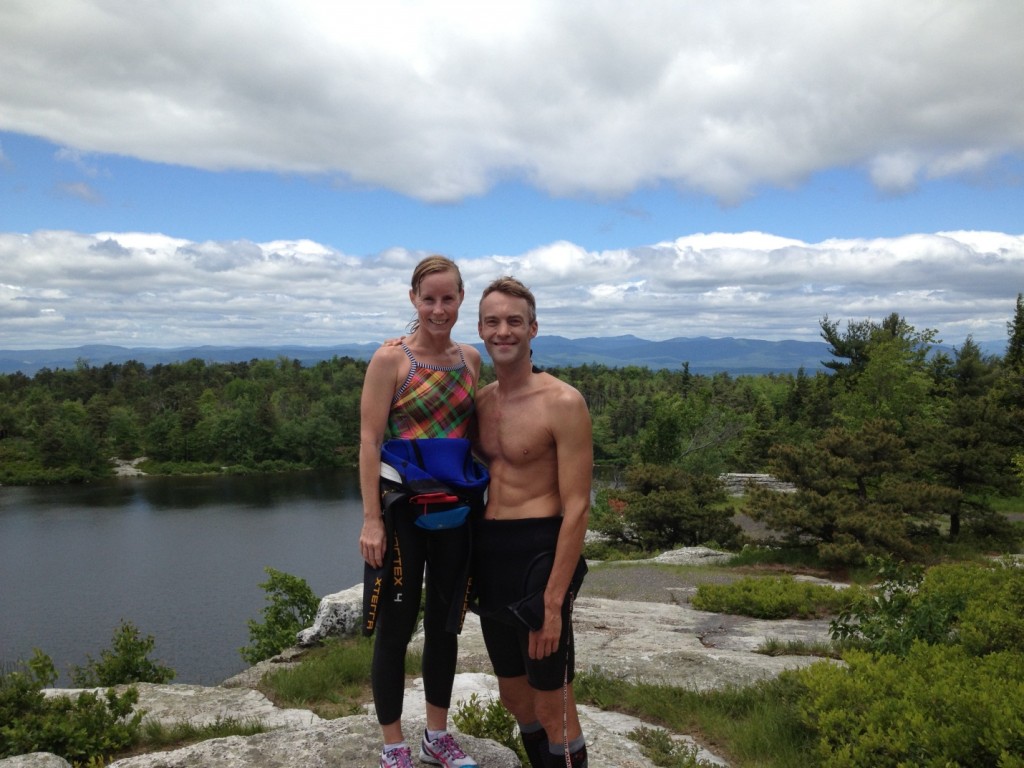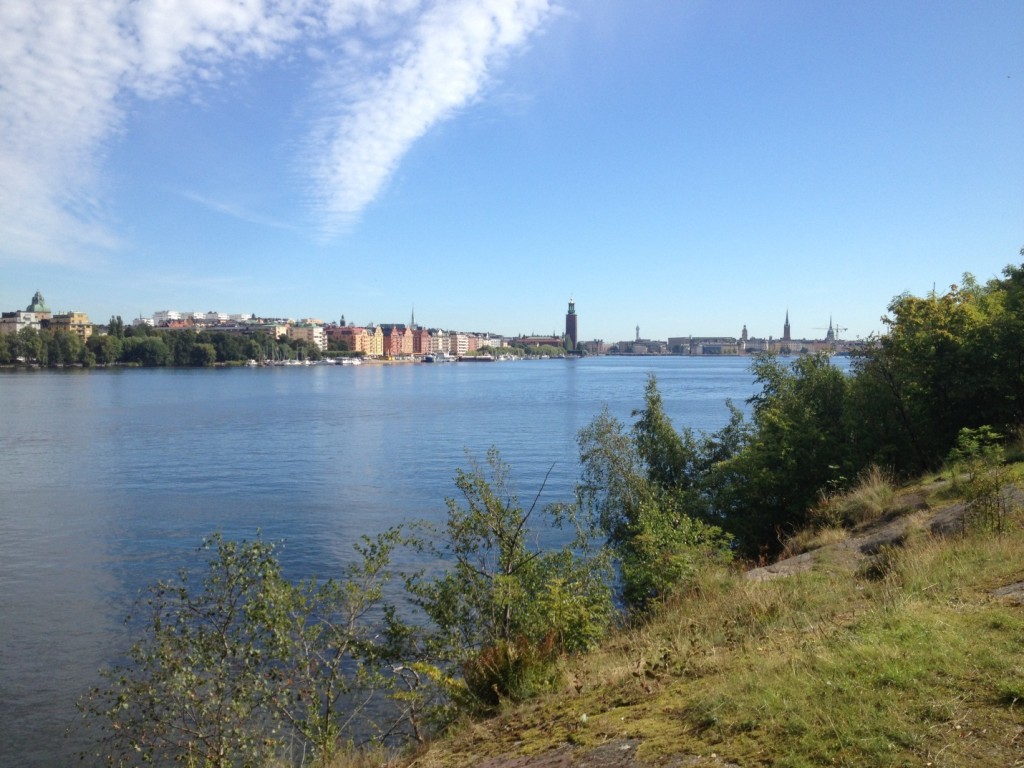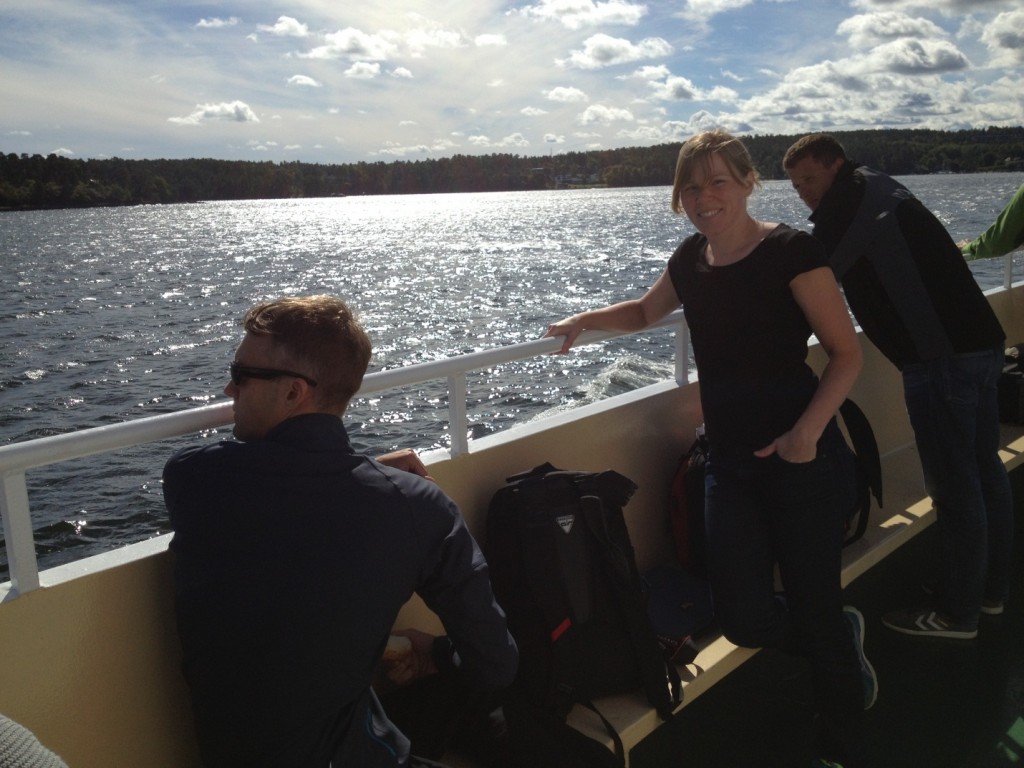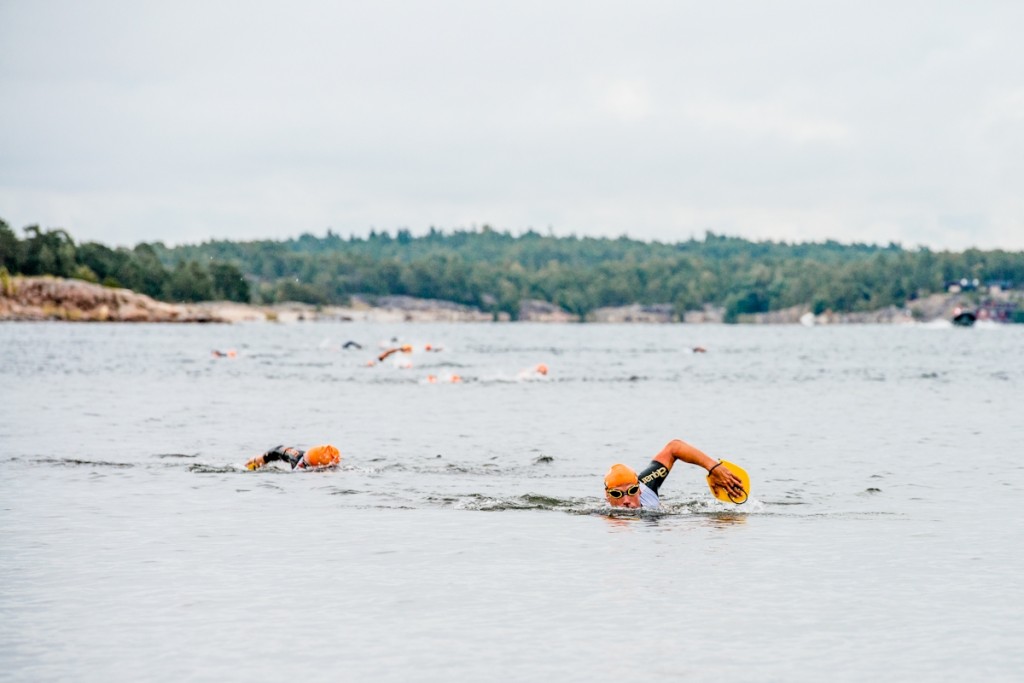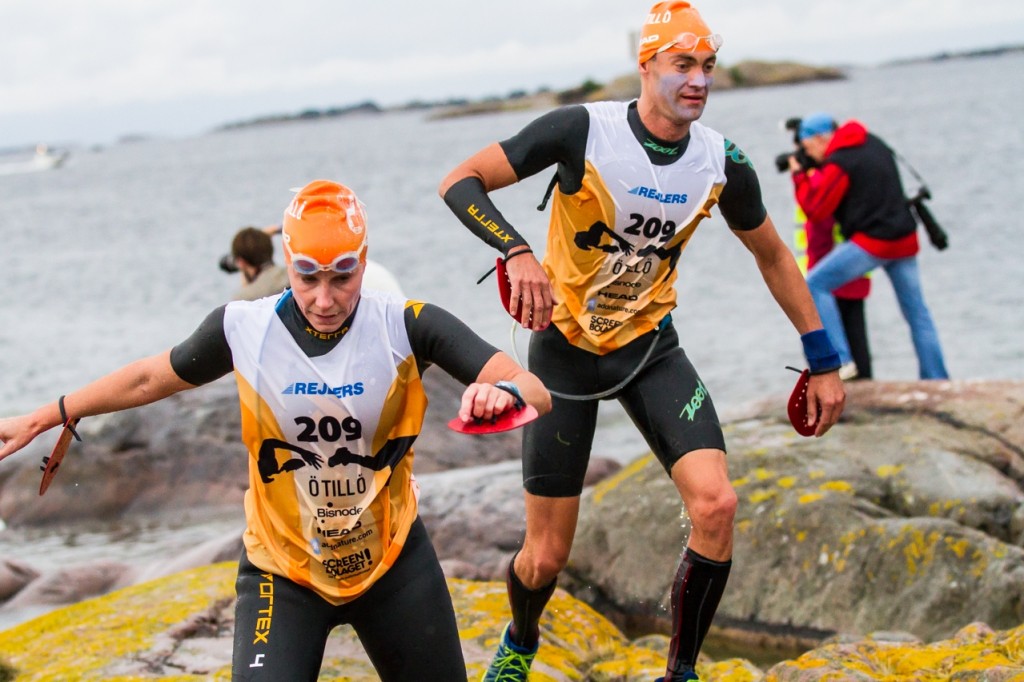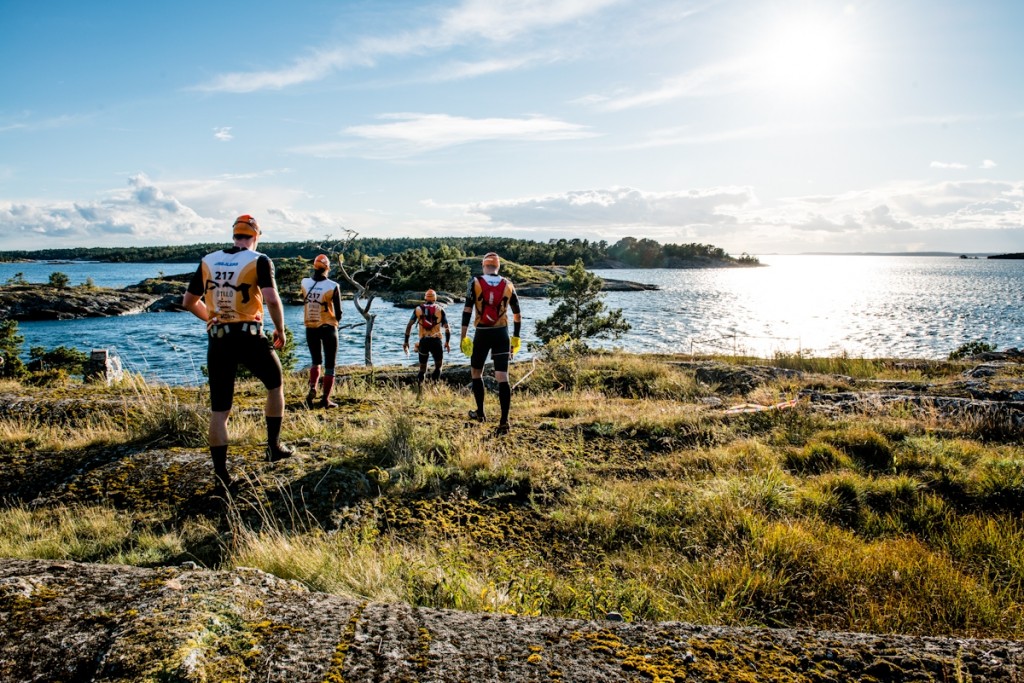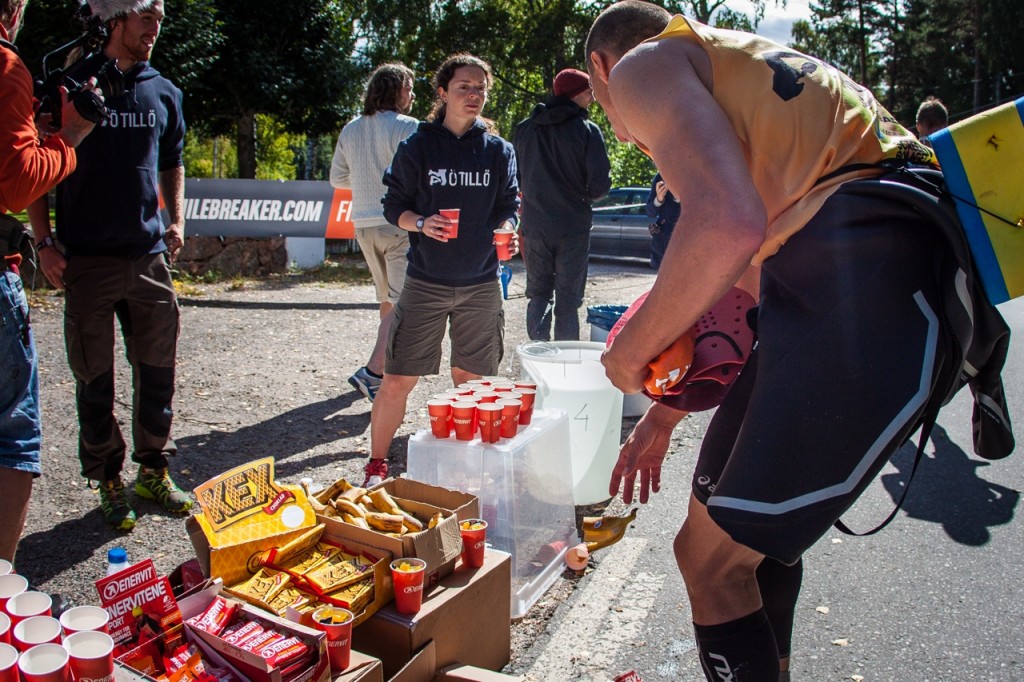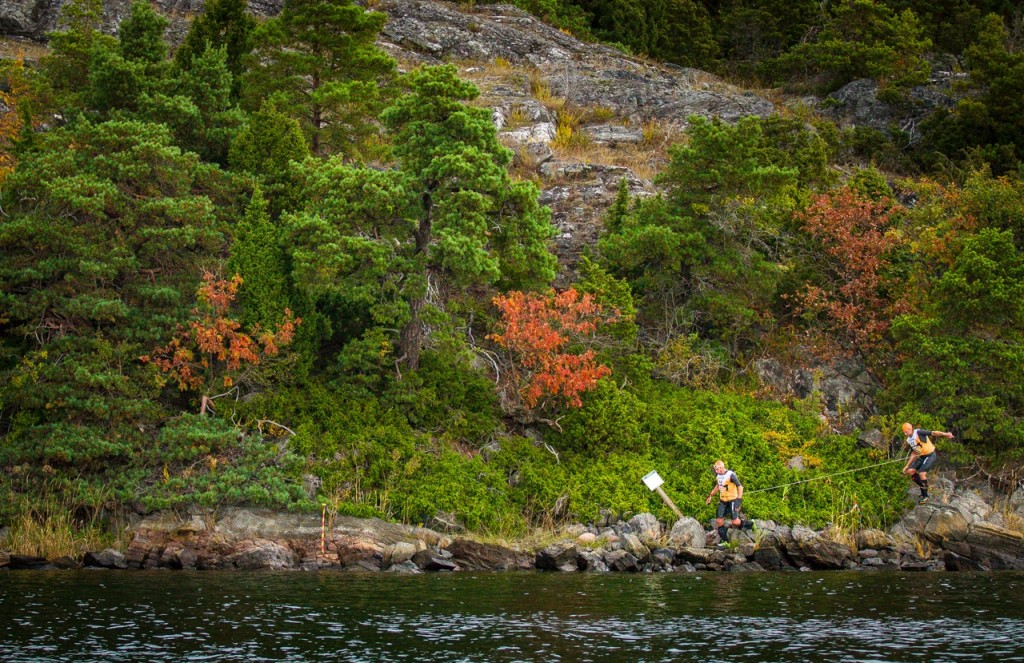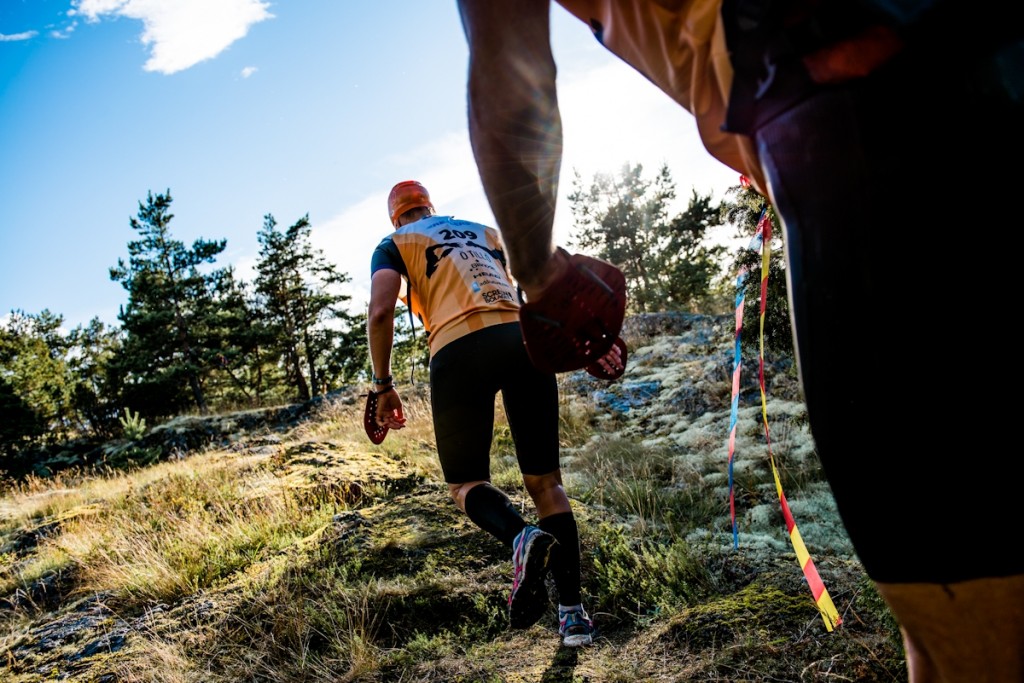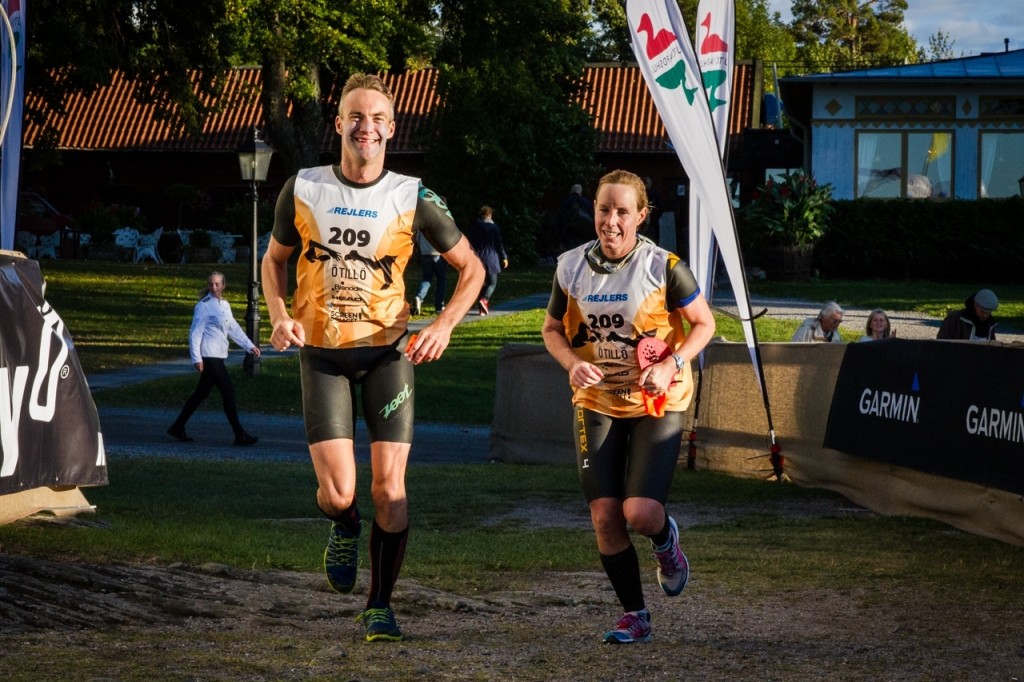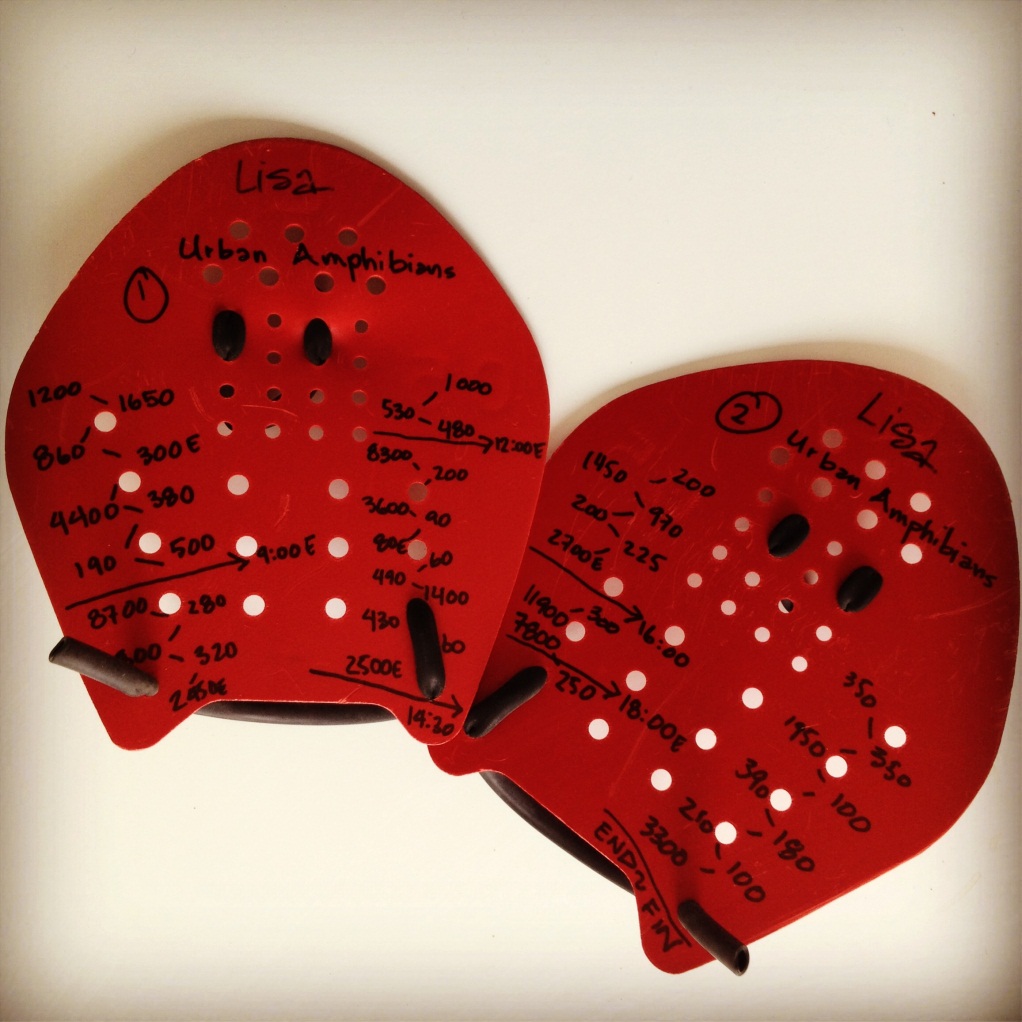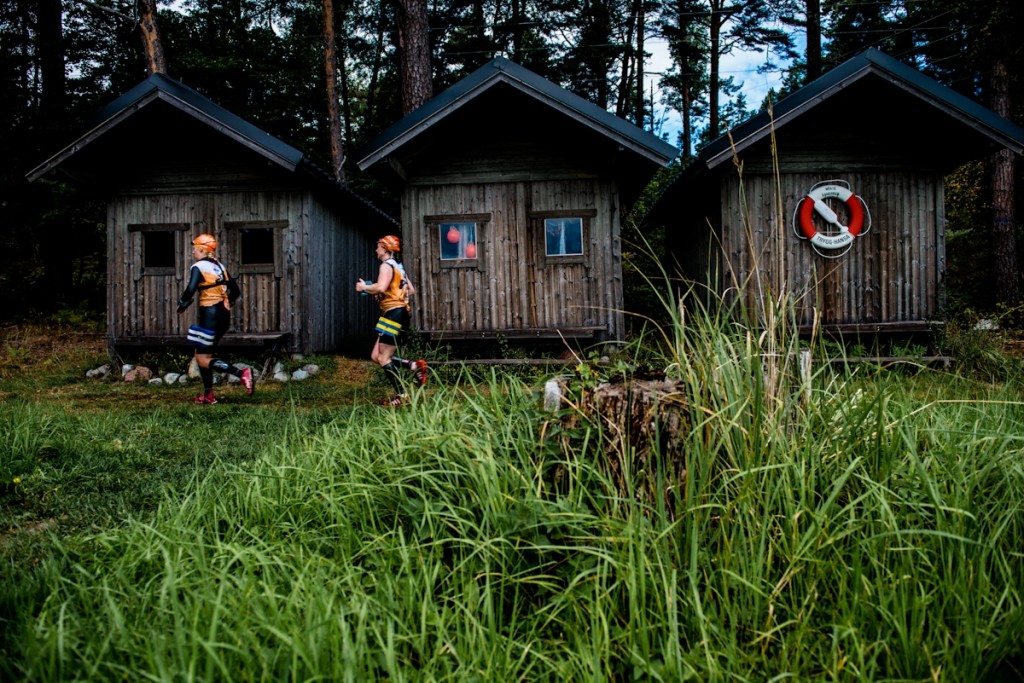Hi all,
So LOSTie extraordinaire, Lisa Neidrauer, just sent me her race report for the ÖTILLÖ 2013… and it is amazing! She and John Humenik just completed it and are still recovering! Don’t let Lisa’s diminutive size fool you, she was made for this race!… she’s a very fast and tough swimmer… and a very fast and tough runner… and loves this kind of adventure… (so is John… well maybe not quite as diminutive though! 😉 ). This is one amazing race… and moves up the rank on my bucket list! Check it out!
PS. There is another post on their ranking etc in a previous post if you scroll down a bit.
Cheers,
Rob
ÖTILLÖ 2013
by Lisa Neidrauer
Photo credit: Jakob Edholm
I normally don’t write race reports, and I confess I don’t often read them either. But when our team was accepted into ÖTILLÖ, I craved every single account of the event that I could find. Google Translate became my favourite webpage, as I tried to decipher Swedish reports, as well any English ones I could get my hands on. So this is both for friends who have the time and are interested in what happened, and hopefully a source of info for anyone out there considering doing it. It’s a unique race, in every sense of the word. To compare distances, pacing and strategies to other events is futile. So here goes:
John Humenik and I, “Urban Amphibians” were accepted on a merit application to ÖTILLÖ in January. The race is structured so that teams of two complete the entire 65km of running and 10km of swimming together, across a series of islands in the Swedish Archipelago. There are 23 islands to run across, 22 straights to swim through, 44 transitions. In order to have a hope of finishing, it’s virtually required that you swim in your shoes and run in your wetsuit. Wetsuits are also mandatory because of water temperature, which supposedly can get down to 10C (I saw no evidence of this in 2013, but apparently it can happen). We discovered the event when Rob Kent posted it here on the LOST website. We looked at the photos, and all the equipment that everyone was wearing (pullbuoys, paddles, fins!), said meh, and moved on. Then a few weeks later it came up in conversation, and we decided what the hell, we’ll throw in an application. If we get accepted, great. If not, well, there are plenty of other ways to spend one’s summer.
Photo credit: Jakob Edholm
There had been a lot of international press for the race in 2012. It was included in a book of the world’s toughest endurance challenges, and CNN highlighted it as such. With all the coverage we weren’t expecting much and were pretty surprised when we got selected. And we were also worried, because now we had to somehow get ready for this thing. The 10km of swimming (shoes, no shoes, cold, hot, whatever) was not going to be an issue for us, and we have done our share of road running races, along with a few trail events, but otherwise we were green.
I immediately went into research mode and spent hours and hours on the internet researching shoes, wetsuits, hydration packs, compression socks. It is a damn good thing I am normally just an open water swimmer who doesn’t have to deal with “gear”, because I would be obsessed. Yet another reason to stay away from triathlon.
By June I had settled on Asics DS Racers, a Xterra wetsuit cutoff at the arms and knees, hand paddles and was experimenting with socks and water bladder options. We spent some time in Florida for some early training, then a week in New Paltz in June, followed by a full week at Kennisis Lake in July, where we put in about 100km of trail running in the Haliburton Forest & Wildlife. Generally speaking I spent the summer swimming 15-19km a week (a light schedule compared to previous years) and between 45-60km of running. Including intervals. Which I hadn’t done in many years. Which were just as painful as I remembered.
Urban Amphibians training in Minnewaska State Park, New Paltz
We flew out to Sweden a week ahead of time and spent a great week in Stockholm being tourists, visiting with new friends, the Lanttosisters, Sofie and Lisa (who were also doing the race!) and doing some last minute prep in Eriksdalsbadet and on trails in Södermalm.
Stockholm
Race day was Monday, September 2nd, and we got on the chartered ferry Sunday morning with all the other teams, and headed out to Sandhamn, in the archipelago, where the race would begin. Unlike most other events where you pay for the race itself, and the transportation and accommodation are yours to deal with, ÖTILLÖ is a full package. For the roughly $1500 team entry fee, we received: ferry ride to Sandhamn, pre-race dinner, nice hotel room for the night, pre-race breakfast, the race itself, post-race dinner, another night in a different nice hotel in Uto, post-race breakfast, and the ferry ride home. We live in an era of big, corporate sporting events, where the organizers are usually out to make a nice profit for themselves. (WTC comes to mind, anyone?) With ÖTILLÖ, I’m having a hard time believing they could even break even. The race directors, Michael Lemmel and Mats Andersson are hands-on and personally invested in every aspect, and it’s immediately apparent how much care is put into it. The organization is stellar, especially for an event whose logistics are beyond complicated. I can’t say enough about this; it was truly an impressive undertaking, right down to the fact that every racer is personally greeted upon arrival and bid farewell upon leaving.
Ferry ride to Sandhamn
So the race started at 5:55am. We had been told it could start anywhere between 5:40 and 6:10am, as we had to wait for the Tallink ferry to pass (for those who have done MIMS, it’s like waiting for the Staten Island ferry to pass before the start. You don’t mess with a ferry boat) The first segment was a 1200m run, with an ATV leading out/holding back the field, so we all hit the water at nearly the same time. There was a strobe on the other shore, which made sighting easy. The water felt warm, there was no pushing, shoving, and though it took me a while to feel warmed up, we had clear water ahead of us for a good portion of the swim.
Photo credit: Jakob Edholm
But as soon as we crawled out, it was clear that this day would be treacherous. Slippery, jagged rocks everywhere. The speed I was moving at could not be called running, and we were passed by numerous teams who could indeed manage to run on this stuff. The Swedes are all able to do this! Some even do it tied together with ropes, which seems suicidal to me, but somehow they do it. John was much better at this than I was, though he was relegated to sticking with me. My problems with depth perception and vertigo meant it was slow going. I was happy to get back in the water and after the next swim, we headed toward the first cut-off with plenty of time to spare. I already had bleeding fingertips by this point and soon after came my only real significant fall, scraping up my arm quite nicely. My paddles saved my hands somewhat!
Photo credit: Nadja Odenhage
Generally speaking, the smaller islands were a combination of highly technical trails and rock scrambling and the larger islands were actual trails and gravel roads. We passed through both seemingly untouched nature reserves and farmed pastures, following instructions to close gates as we passed through them (to keep the cows from escaping!) I felt we were keeping a decent pace on the roads and gravel trails, yet were continually getting passed on the terrain. We would often re-pass teams on the swims, so there was a lot of going back and forth. One island, Kymmendö Bunsön was only 1450m long, but took us half an hour to traverse. The water temperature varied, but got cooler as we went along. Still, I think there was only one swim where it was truly cold, maybe mid-to-low 50s F (11-12C).
Photo credit: Jakob Edholm
Even when it was slow, tough-going, we could take some pleasure in the fact that we were in the midst of some awesome scenery. And many island residents were out, cheering on all the teams. Note: when traversing rural Sweden, and a local asks where you are from, and you say “Toronto”, chances are good they will reply “Toronto Maple Leafs!” At this point, the appropriate response is a cheery exclamation of “Mats Sundin!” and “Borje Salming!”. This will be very well received.
Every time we hit an aid station, we were greeted by happy faces, ready to give us whatever we wanted. When John wanted coffee, someone got him coffee. I mostly stuck to bananas and several kinds of Enervit drink, though there was often a smorgasbord of cinnamon buns, candy, hot dogs, and soup. The stations were opportunities to assess where we were in the field; rarely were we at one alone. I also felt that there were an adequate number of them, so that the nutrition we carried (gels) we more of a back-up plan than anything else.
Photo credit: Nadja Odenhage
After nearly losing our shoes in a quicksand-type water exit, running through a reedy swamp, successfully avoiding cow patties, taking several wrong turns, enduring rain that felt suspiciously like hail, sliding down a cliffside on our butts (the spectator boat was strategically located here, I believe so the crowd could watch everyone sliding down a cliffside on their butts!), and generally avoiding killing ourselves, we hit the 4pm cutoff at 2:12pm, and knew we had a cushion going forward. Diving into a short swim, we arrived to face the 20km run on Ornö. This was where everything began to hurt. It’s not that we’d been doing way too much running; it’s that we’d been doing way too much climbing, scaling, crawling, balancing, sliding down cliffs, thrown in with the running. It takes a toll. My abductors were a mess, and within a few minutes of starting out, my left knee was thoroughly unhappy. My left knee! My good, trustworthy, surgery-free knee. John was feeling better than I, though his knees were not thrilled either. We resorted to walking up the hills and trying to run (jog?) the rest.
I had been carrying two naproxen that I’d been reluctant to take, for fear of triggering stomach issues. Towards the Ornö church energy station at the 11km mark, I gave in and took them, while dumping the tiny waist pack I’d been carrying them in, along with several gels, in a farmhouse garbage bin.
Photo credit: Nadja Odenhage
We approached the energy station at Ornö church (Final 15), feeling pretty crappy. I took some candy in with my normal downing of bananas and Enervit, while John asked for and received an entire package of candy to take with him. We had two mixed teams pulling in behind at the same time, teams we hadn’t seen before so I knew we were slowing down. But as we started out on the paved road, my drugs kicked in and we were able to make some real progress, passing at least one mixed team, and a few men’s teams. Toward the final cutoff, the smoooooth asphalt turned to gravel, then turned off again onto a rough, single track trail. One of the teams we had passed while they were walking the gravel road, suddenly passed us again. How they could walk the easy parts, then have energy to run the tough stuff is something I still don’t quite comprehend.
We hit the final 6pm cutoff, with over 75 minutes to spare. We were now assured of a finish, regardless of how long we took to do it. The final islands were full of more ridiculous terrain, and a couple were small enough that it would have been faster to swim by them than to “run” over them, something I suggested we do more than once.
Photo credit: Jakob Edholm
There was a small crowd cheering as we hit Utö and began the 3.3km stretch to the finish. The top of John’s foot was giving him an awful lot of pain, so we resorted to “walking with a purpose”. It was nearly as fast as running anyway. With about a kilometre left to go, we were passed by a mixed team and so we resolved to run it in. An uphill to the Utö Värdshus brought us under the line in 12 hours and 31 minutes. We had been hoping to finish in 12 hours, but we were happy enough with where we ended up. We were the 8th mixed team and 59th overall, out of 114 teams that started the day.
Photo credit: Nadja Odenhage
For those that are considering the race themselves, here are my thoughts on what worked and what didn’t.
All good:
- Bag Balm. I should buy stock in this company. I completed the entire event without once pulling down my wetsuit and emerged without a trace of chafing and nary a blister on my feet. For this, I have to thank this wonderful cow udder balm. I slathered the stuff on and it worked like magic. Highly recommended to anyone doing this event in future years.
- My wetsuit/compression sleeve/hand paddles outfit. I used the cutoff legs of the suit under the compression sleeves and appreciated the little bit of extra buoyancy and compression. No calf straining issues, which I had been very worried about. The hand paddles helped mitigate wearing shoes in the water and were useful protectors when getting out onto the rocks. I had written the entire course on the back of them and can’t imagine doing the race without having those course distances on hand… literally.
- Nutrition. I carried gels in a tiny waist pack and my friend Julie sewed a pocked into my tri-shirt to hold a 1L water bladder. I finished with over half my liquid left, as we made sure to drink a lot at the aid stations. But having it on hand was useful when we took took gels/pain meds outside the aid station and it was not cumbersome underneath my wetsuit. I only took one salt pill; I believe John took two.
- Swim training plan. I started swimming in shoes in February, and by the time the race came along, it felt almost normal. It takes getting used to, so I am glad I started in with them early.
Race course
Needs improvement:
- My shoes. I wore Asics DS Racers. The plus side of these shoes were that they were light, drained well, due to both the mesh and the holes in the bottom, and were real running shoes. They have an 11mm heel/toe drop, which is something I needed, given that I have calf issues and run with orthotics. On the trails, gravel roads, paved road, they worked great. On the rocks, less so. We had rain, which made the rocks slippery, but I don’t think my shoes had the tread to deal with them properly. I’m not sure which shoe I would have switched to. Many people wore Inov8, but the lack of support/minimalist running style of those shoes would have been a problem for me everywhere but the rocks. I spent a huge amount of time researching shoes and knew it was a compromise.
- Run training plan. Generally this worked well, but if I were to do it again, I would drop one of the easier run days and add in weights instead. I think having more leg extra strength on the rocky terrain sections would have been a boost. I also would have spent a good few weeks out in the Georgian Bay archipelago, learning to run better on rocks. We here in Ontario have a near perfect facsimile of the race conditions, and this should be used to full advantage.
Finally, strategies for getting in: This race is going to get tougher to enter every year. A proportion of the slots are based on merit application, a portion on lottery and a few based on placing well in other races (all in Sweden). The merit application is free, while the lottery costs a small sum. A team can enter both. The 120 team breakdown this year was 86 men’s team, 10 women’s teams, 24 mixed teams. Despite the larger number of men’s teams, this category is much harder to get into. Qualifying for Kona IM as an age-grouper will not get you a merit spot on the men’s side. If I were trying to enter again, I would make sure to submit my merit application the very second the entry goes live. Lottery applications can be submitted more leisurely. Even if a team doesn’t get selected through merit, they are ranked according to order of submission. Teams do drop out, right up to the last month. An early submitted merit application, even if unsuccessful during merit selection, has a decent chance of eventually getting a spot. The lottery is just that. But better odds than 6-49!
Photo credit Jakob Edholm
It was a wonderful, ridiculous, treacherous, beautiful, exhausting, and amazing experience. It will take some time to fully digest, but I am extremely grateful to have taken part and completed it. All the teams helped each other out (even the leading mens teams, from what I hear) and there was a real camaraderie and sense of sharing a magnificent day, in a stunning environment, together. It’s a unique event for many reasons, but this is perhaps what makes it most special.
To those considering doing ÖTILLÖ in the future, all I can say is “yes!”
Lisa
PS: Anyone reading this who plans to enter and has further questions, fire away…
